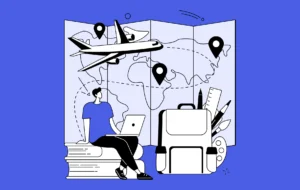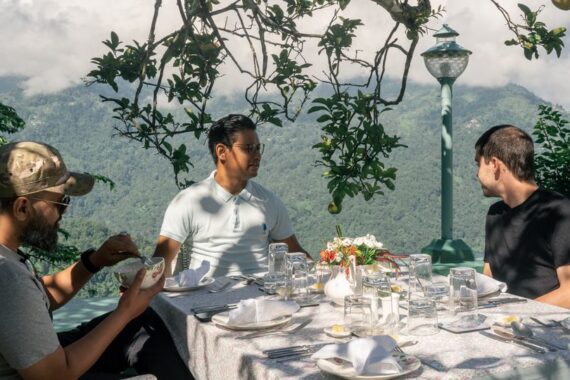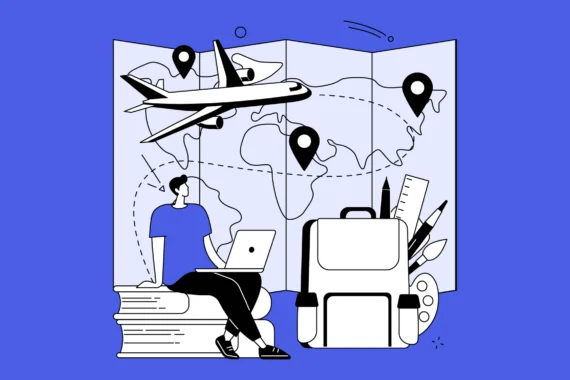“Mujhe Yeh Aisa hi Chahiye!”
These 5 words can strike fear in the hearts of all Travel Professionals. Whether it is demanding that you accommodate a last minute change when everything is fully booked, or wanting that picture-perfect selfie in the middle of a storm, or even asking for chole bhature at Lake Como.
As someone who works in tourism, how you handle requests like this will determine your success. And as this is a a people driven business, there is only one mantra to improve
– Training, Training, Training!
Training for Decision Makers

Decision Makers need to look at their businesses holistically, understand market dynamics, and focus on areas that build on their strengths as well as address any weaknesses. Their training is designed to give decision makers additional insights that they can use to create a strong and sustainable business. They include:
Strategic & Tactical Planning: How do I price and package our escorted and independent tours? Should we include flights and day activities in the cost? Training helps to identify & evaluate options for better profitability & satisfied customers based on customer behavior, market trends, and competitor activity.
Market Trends: You need to understand the current trends, their challenges & make informed decisions both for your organization and the customers. This will help you understand what people are looking for in a holiday right now – whether it is adventure vloggers, romantic getaways or family vacations – and how to take care of their needs in each case.
Risk Management: Today’s environment includes multiple uncertainties like natural disasters, political instability and economic downturns. Dealing with cancellations, change of dates and itineraries are some tips that can be picked up to reduce risk and improve business stability.
Management Skills: Budgeting for different types of itineraries & destinations, time management, communication, problem-solving abilities & PR.
MICE for Corporates: The needs of corporate clients, the types of events, and the services they expect from a MICE provider. You also need basic knowledge of the sales cycle, building relationships with clients & developing effective sales presentations. And finally the logistics, catering, entertainment and transportation required to host MICE events.
Training for Front Office Staff

The Front office staff is the main point of contact of the customers with the business. As a result, the customer experience is dependent on the abilities of the front office staff – their knowledge and their understanding of the customer requirements. Hence, they need to be properly trained to be able to deliver the right solution to customers. This includes-
Domain Knowledge: The hotel reservation process & bookings (types, sources), type of guests, group bookings, room types, rates & meals, food & beverage basics, experiences & culture.
Destination Facts: Country overview with maps, visa, flights, transport, itinerary, cities, wellness, national parks, top attractions, architecture, key features, historic sites, monuments, museums and other tourist destinations.
Soft Skills: Basic etiquettes, empathy and emotional intelligence for various levels of customer interaction.
Customer Satisfaction: Understand how to manage customer requests in a sensitive manner as well as balance the organizational objectives to ensure a win-win for both customers and the business.
How is the Training Conducted
Training is conducted through an AI enabled technology platform. Anyone across the world can register and pick up the relevant modules based on their work profile. You can be an aspiring travel student, blogger, influencer or a professional across the spectrum of the travel industry.
We believe that in today’s dynamic world, only the fastest, most agile organizations will be able to succeed. And to do this, all the people in the organization need to be aligned together, and have the training that they need to deliver high performance.
So, our motto at the beginning of every new training session is the quote from Bill Gates – “Your most unhappy customers are your greatest source of learning.”








Your point of view caught my eye and was very interesting. Thanks. I have a question for you.
Thanks for sharing. I read many of your blog posts, cool, your blog is very good.
I don’t think the title of your article matches the content lol. Just kidding, mainly because I had some doubts after reading the article. https://accounts.binance.com/es-MX/register-person?ref=JHQQKNKN
Thanks for sharing. I read many of your blog posts, cool, your blog is very good.
Can you be more specific about the content of your article? After reading it, I still have some doubts. Hope you can help me.
cheap canadian pharmacy online
http://expresscanadapharm.com/# canadian pharmacy antibiotics
best canadian pharmacy online
A seamless fusion of local care with international expertise.
lisinopril 3
Trusted by patients from all corners of the world.
What side effects can this medication cause?
cheap cipro pill
Their global presence never compromises on quality.
The pharmacists always take the time to answer my questions.
buying cheap cytotec without rx
A universal solution for all pharmaceutical needs.
The staff always goes the extra mile for their customers.
fluoxetine without rx
The pharmacists always take the time to answer my questions.